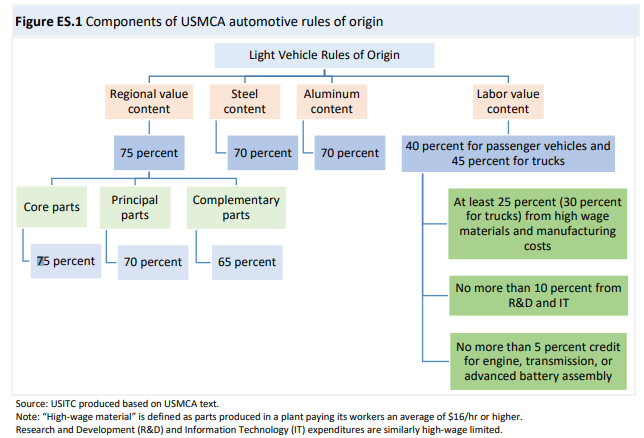Steel Products Prices North America

Impact of USMCA on Metal Fabricators
Written by Sandy Williams
May 14, 2019
Metal fabricators are worried about how content provisions in the U.S.-Mexico-Canada Agreement will impact their industry. The proposed trade agreement for North America includes provisions on steel and aluminum regional content for automobiles, but may extend to other manufacturing sectors.
“Too many people view NAFTA as just about cars when the agreement impacts virtually every aspect of the manufacturing sector,” said Omar Nashashibi, founding partner with The Franklin Partnership and a lobbyist for the Precision Metalforming Association (PMA) in Washington, D.C. “If the new NAFTA takes effect, you could see significant changes in supply chains for agribusiness, electrical, and other industries as multinationals examine expanding operations in Mexico and domestic companies re-examine their steel and aluminum sourcing to meet regional value content requirements. At PMA, we are advising our members in the U.S. to watch for increased competition from Mexico and additional demands from customers.”
The USMCA requires that autos be made with 75 percent regional value content, up from 62.5 percent under NAFTA. The requirement covers all inputs to a vehicle, including plastic and glass, but is primarily an incentive to increase the use of domestic aluminum and steel.
A USITC report on the impact of the U.S.-Mexico-Canada Trade Agreement refers briefly to the rules of origins (ROOs) requirements for other sectors in manufacturing:
“In addition to the automotive steel and aluminum requirements, the USMCA ROOs contain a number of new RVCs or content provisions for certain sectors. Those ROOs encourage greater use of North American-produced steel, adding RVC or steel weight requirements to goods that only needed changes in tariff classification to qualify for preferential tariff treatment under NAFTA.”
How these requirements will affect metal fabricators and non-automotive steel and aluminum products remains unclear.
“Despite the overall ambiguity as it applies to manufacturing sectors, some metal product categories have been specified in the agreement as areas of focus,” said Stephen Barlas, a contributing writer for The Fabricator. “They include certain welded tubes and pipes, fittings, and tool joints; iron and steel structures and parts thereof; and nails, tacks, drawing pins, corrugated nails, and staples. They have some transition period to meet a standard of either 70 percent steel or 75 percent RVC. So these nonautomotive sectors likely will be industrial ones, not consumer ones, such as refrigerators and HVAC products.”

Sandy Williams
Read more from Sandy WilliamsLatest in Steel Products Prices North America

Nucor slows HRC price climb with $5/ton increase
After eight weeks of double-digit price increases on hot-rolled (HR) coil, Nucor slowed the price rise this week with an increase of $5 per short ton.

Domestic CRC prices surge ahead of imports
The price spread between stateside-produced CR and imports reached its widest margin in over a year.

Evraz raises plate prices $160/ton
Evraz North America (NA) has followed Nucor and SSAB with a plate price increase of its own: up $160 per short ton (st). The increase was effective immediately for all new orders of carbon, high-strength low-alloy, and normalized and quenched-and-tempered plate products, as well as for hot-rolled coil, the steelmaker said in a letter to […]

Nucor lifts HR coil to $820/ton
Nucor has increased its consumer spot price (CSP) for hot-rolled (HR) coil for a fourth consecutive week.

Nucor pushes HR spot price to $790/ton
Nucor increased its consumer spot price (CSP) for hot-rolled (HR) coil to $790 per short ton (st) on Monday, Feb. 10 – a $15/st bump vs. last week. The Charlotte, N.C.-based company has raised its weekly CSP by $40/st over the past three weeks after maintaining tags at $750/st since Nov. 12, according to SMU’s […]

